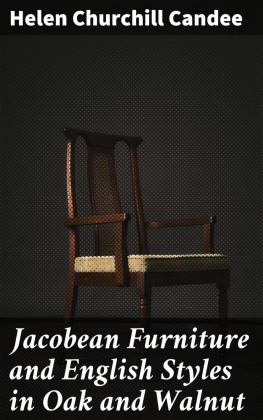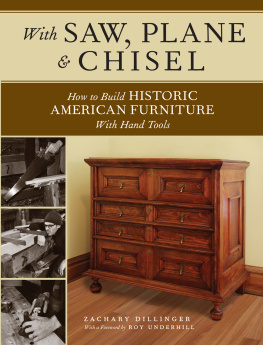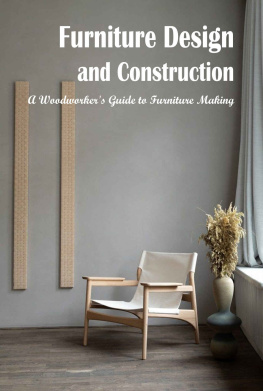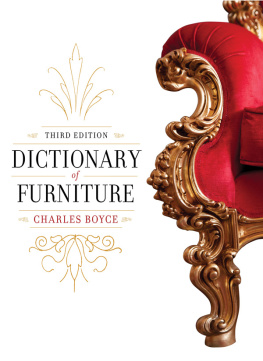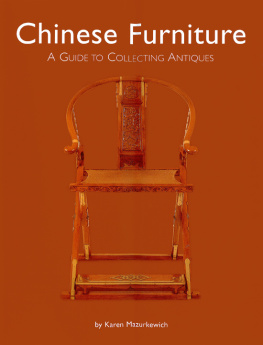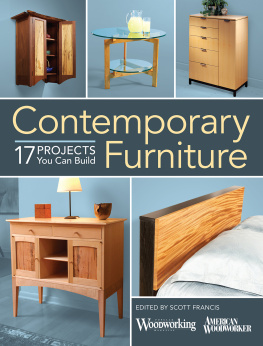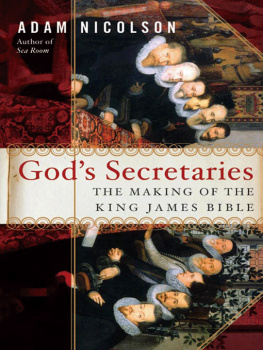EARLY JACOBEAN STYLES
Table of Contents
JAMES I CROWNED 1603
When a passion for collecting antique furniture first swept America, and prizes were plucked from attics, cellars and old barns, the eagle eye of the amateur sought only those fine pieces that were made in the age of mahogany and satin-wood. Every piece was dubbed Colonial with rash generalisation until the time when a little erudition apportioned the well-made distinctive furniture to its proper classes. Then every person of culture became expert on eighteenth century furniture, and the names of Chippendale and his prolific mates fell glibly from all lips.
That much accomplished, the collector and home-maker then threw an intelligent eye on another page of history and realised that the seventeenth century and certain bits of oak and walnut that had stood neglected, belonged to an equally interesting period of America's social development.
All at once the word Jacobean was on every tongue, as Colonial had been before. Attics, cellars and barns were searched again, this time for oak and walnut, not mahogany, and for heavy square construction, not for bandy legs and delicate restraint. It was the marvellous carved chest that first announced itself, and then a six-legged highboy, and the lower part of a thousand-legged tablewhich now we call a gate. These, we said with inspiration, are the gods of the first settlers; mahogany is but modern stuff.
But this time we were more savant than before, and instead of starving our eager minds on the occasional resurrected American bit, we went at once to the source, to England, and there found in abundance (for the long purse) a charming sequence of styles covering all the times of our earlier history as settlers and colonisers. Thus were we able to identify these strange early pieces of our own and to recognise our quarry when found in a dusty corner.
That very old pieces still are found, pieces brought over here in the days of their mode, is proved to any collector. In two towns on Long Island Sound I recently found for sale two six-legged highboys, William and Mary, and that great rarity, a straight oak chair known as a Farthingale chair, made without arms for the purpose of accommodating the enormous crinoline or farthingale of its day. This chair may have supported the stiffly dressed ladies of Elizabeth's court, so like it was to the Italian models of Tudor times.

Plate IILATE TUDOR MANTEL
From a house built in 1606, which shows a toning of Tudor style into Jacobean

Plate IIILATE TUDOR BED
With motifs which characterised early Jacobean carving, dated 1593
The pity of it is, that no sooner had the artistic eye of the true collector begun to search for seventeenth century furniture than the commercial eye of the modern manufacturer began to make hideous variations on its salient features. He caught the name of Jacobean and to every piece of ill-drawn furniture he affixed a spiral leg and the Stuart name; or, he set a serpentine flat stretcher and called his mahogany dining set, William and Mary. These tasteless things fill our department stores, and it is they that are rapidly filling American homes. And the worst of it is, that both buyers and sellers are startlingly yet pathetically glib with attaching historic names to the mongrel stuff, and thus are they misled.
New furniture must be made, however, or resort must be had to soap-boxes and hammocks. The old models are the best to follow for the reason that the present is not an age of creation in this direction. The stylist is always a hobby-rider, and I must confess to that form of activity, but it is always with the idea in mind to make and keep our homes beautiful. And so I make the plea to manufacturers to stick to old models of tried beauty, and to buyers to educate their taste until they reject a hybrid or mongrel movable with the same outraged sense that they reject a mongrel dog.
Now let us pass through the gate that leads to happy hunting-grounds of study where we find historic men and women, both royal and common, making the times that called for the furniture we now admire as deeply as they admired it.
One might almost say that since Henry the Eighth's introduction of the styles of the Italian Renaissance into England, that country has produced no original style of furniture. But lest this statement be resented by affronted savants and hurt sentimentalists, side by side with that fact must be placed another, that England has played upon the styles she imported with such skill and grace that she has thus produced variants of great and peculiar beauty.
England has taken the furniture creations of Europe through the centuries and has impressed them with her national traits, with a resulting beauty entirely her own. The effect is bewildering to all but the student of styles, for without study one is often unable to account for certain alterations of detail and construction. It cannot be too often repeated that as each nation in turn adopted the Italian Renaissance, that nation impressed its own signet upon the style. Thus came all the variations.

